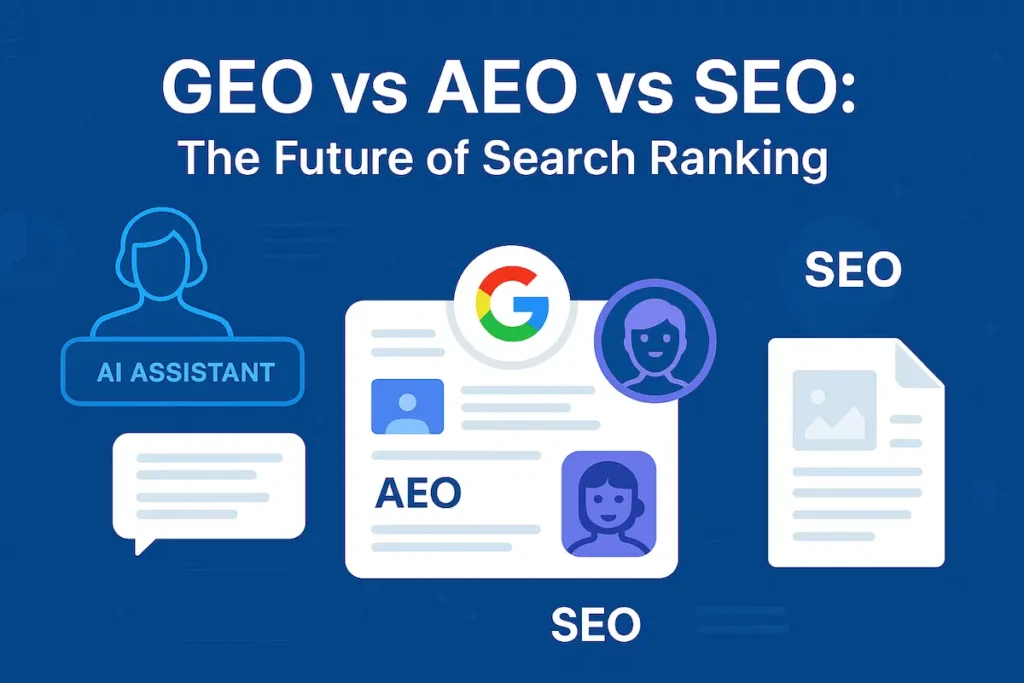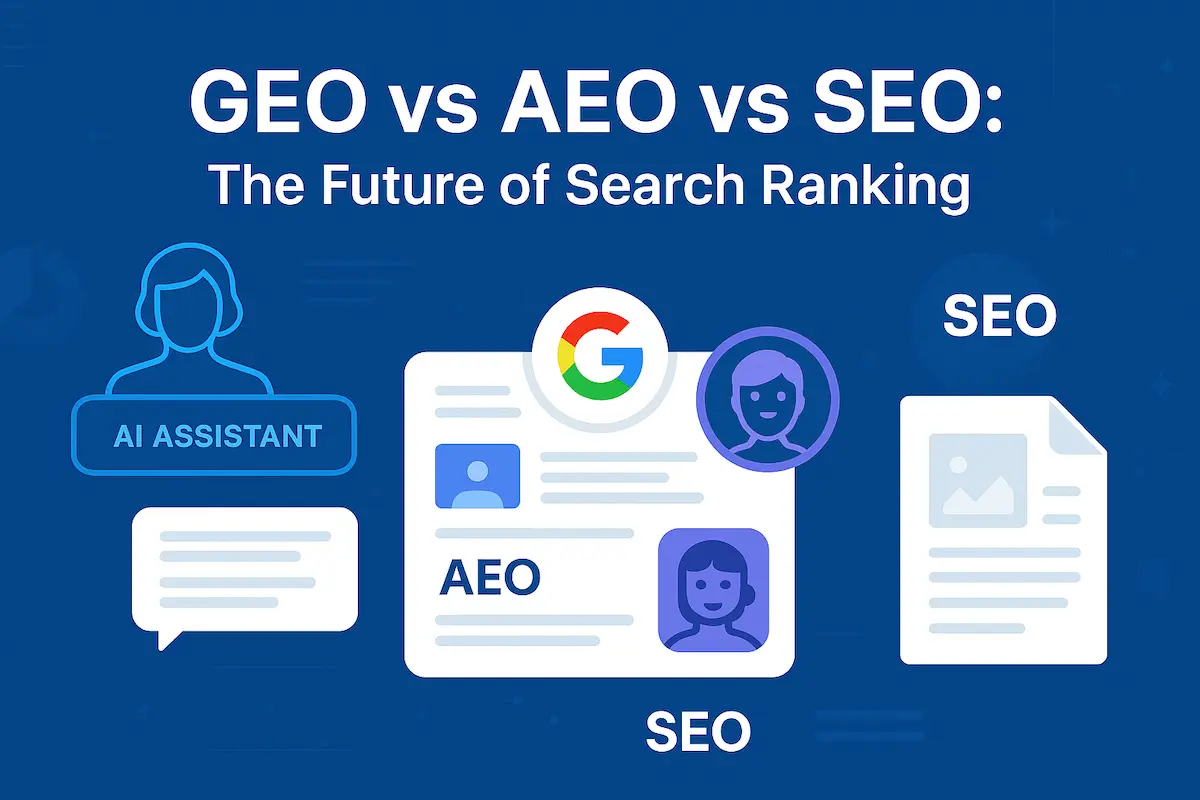
Search is evolving faster than ever. Traditional SEO — optimizing for search engine result pages (SERPs) — is no longer enough. With the rise of AI-powered search assistants like ChatGPT, Google’s SGE, and Perplexity AI, brands must rethink how they get discovered online.
This is where Answer Engine Optimization (AEO) and its next evolution, Generative Engine Optimization (GEO), come in. In this blog, we’ll break down what they mean, why they matter, and how you can future-proof your business.
What is Answer Engine Optimization (AEO)?
Answer Engine Optimization is the process of optimizing your content so that it directly answers user questions in a way search engines (and now AI chatbots) can easily understand and display.
Instead of just ranking in the top 10 blue links, AEO focuses on:
- Featured snippets (position zero in Google)
- Voice search results on devices like Alexa, Google Assistant, Siri
- Direct answers provided by AI assistants
For example, if someone asks “What is local SEO?”, an AEO-optimized article gives a clear, concise, and accurate definition that the search engine can present as the top answer.
The Shift Toward Generative Engine Optimization (GEO)
Generative Engine Optimization (GEO) is the next step. It’s about training AI models to pick your content as a trusted source when they generate answers — not just retrieve them.
While AEO is about giving search engines clear answers, GEO is about giving AI engines context, authority, and structured data so they can synthesize your information into their generative response.
Example:
When a user asks ChatGPT, “Best digital marketing strategies for 2025,” a GEO-optimized article ensures your brand is cited or mentioned in the AI’s long-form answer.
Why AEO & GEO Are Critical in 2025
- Voice Search is Exploding
Over 50% of online searches are now voice-based. Users expect instant, conversational answers. - AI Search is Becoming Mainstream
Platforms like Google SGE, Bing Chat, and Perplexity are acting as “answer engines,” summarizing results — and often cutting out traditional website clicks. - Brand Authority Matters More
AI engines rely on trusted sources. If your brand is not building topical authority, you risk being invisible in generative search results.
How to Optimize for AEO & GEO
Here are actionable strategies for your agency or business:
1. Write for Questions, Not Just Keywords
- Use tools like AnswerThePublic, AlsoAsked, and Google’s People-Also-Ask feature.
- Structure your blogs with Q&A style headings and concise answers.
- Example:
Q: What is GEO in marketing?
A: Generative Engine Optimization is the process of optimizing your content to appear in AI-generated responses and summaries.
2. Leverage Structured Data (Schema Markup)
- Add FAQ Schema, How-To Schema, and Product Schema to help search engines and AI understand your content format.
- Structured data makes it easier for AI models to pull the right answer.
3. Build Topic Authority
- Instead of random blogs, create topic clusters around your niche.
- Example: Have a main pillar page on “Digital Marketing 2025” and supporting articles for SEO trends, social media strategies, AI tools, etc.
- This signals expertise to AI and search engines.
4. Optimize for Conversational Tone
- Write in natural language, as if speaking to a human.
- Voice and AI queries are more conversational than typed queries.
5. Use Authoritative Sources & Citations
- Link to credible studies, statistics, and expert opinions.
- This builds trust and helps AI rank your content higher.
6. Measure and Iterate
- Track impressions for featured snippets in Google Search Console.
- Experiment with different answer formats (bullets, tables, numbered lists).
The Future of SEO is Here
SEO is no longer just about keywords and backlinks — it’s about being the best, most trusted answer to your customer’s questions.
Answer Engine Optimization (AEO) helps you win today’s search results, while Generative Engine Optimization (GEO) positions you for tomorrow’s AI-driven world.
If you start applying these strategies now, you’ll stay ahead of competitors who are still playing by old SEO rules.


